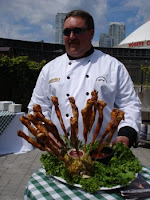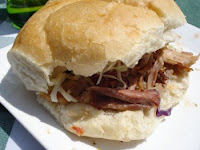A few weeks ago, through an odd series of events, I found myself in possession of a mixed case of beer from Pennsylvania. I’d tried a fair number of PA beers before, from breweries like Victory, Sly Fox and Weyerbacher, but this specially assembled collection contained an assortment from three breweries that I wasn’t very familiar with: Church Brew Works, Erie Brewing and Yard’s Brewing.
As is usually the case with these things, the beers ranged from quite good to not-so-much, and I thought I’d share quick round-up of my thoughts on the 11 new beers I tried.
Church Brew Works
I’ve long wanted to visit the Church Brew Works brewpub, which is fittingly located in a former church in Pittsburgh, mainly because the photos I’ve seen of the place look absolutely stunning, but also because I’ve been curious about their beer line-up since I had a chance to try their Oatmeal Stout on tap at Cole’s in Buffalo a couple of years ago. So I was happy to find these four bottles in the package, although unfortunately, most of them ended up letting me down.
Pious Monk Dunkel is the best of the four, having a perfectly on-style clear brown-amber colour with a small head, and mild but inviting aroma of toasted malt, bread and tobacco leaf. The flavour is mild as well, but also good, with hints of coffee, smoke, toasted malt, and a short but pleasant bitter finish. Simple, but well made and satisfying.
A bit less impressive is the Pipe Organ Pale Ale. It looks nice, with a sunset copper-gold colour and a small white head. But the aroma is odd, holding a faint caramel note that was overwhelmed by overripe (i.e. slightly rotten) fruit and something sharp that I can’t quite place. The body is moderately carbonated with a medium mouthfeel that gets a bit sticky as it warms, and the flavour is as suggested by the aroma – caramel malt, pungent fruit, and that sharp edge – followed by a moderately bittered finish. This is puzzling beer that I suspect might’ve been mildly infected, but not in a familiar sort of way.
Thunderhop Double IPA seemed promising – for this hophead, it’s hard to go wrong with an 8% double IPA – but it’s ultimately a disappointment. As with the Pipe Organ, it looks nice in the glass – golden-amber with a moderate white head – but the overwhelming aroma of citric hops with a pineapple juice background is too much even for me. The flavour is equally unbalanced, with strong, acidic hops that have very little malt to back them up. I’m totally cool with hop-bombs as long as beer has a strong backbone for the hops to play against. In this case, the beer is just too thin and flabby, leaving the sharp hops with nothing to hang on.
Finally, the real stinker of the bunch is Celestial Gold. I got nervous when I saw the very pale gold colour with a small white head that disappeared quickly. And my fears were proven to be well-founded by the grainy malt aroma with a slight vegetal note, the thin body with heavy carbonation, and the flavour that starts sweet before being overtaken by an unpleasant overcooked vegetable undertone, and an unbalanced bitterness in the finish. Supposedly a German-style Pilsner, but it seemed to me to be a simple mainstream lager, and a poorly made one at that.
Erie Brewing
Like the Celestial Gold, Erie’s Presque Isle Pilsner is a pretty lacklustre take on the style, with a very light golden golden colour, a small white head, and an aroma of light malt, subtle hops, and an unpleasant note of cooked corn that builds as it warms up. Thankfully, the corn doesn’t come though in the flavour, but there not much else there either. The best I can say is that it finishes clean, with some mild Saaz notes, but it’s not much of a pilsner.
Mad Anthony’s APA is a good step up from the lager. It pours a clear golden-orange with a small but persistent snow white head, and the aroma is pleasant and balanced, with fresh-smelling malt and some slightly citric hops. The flavour is nice, following on the aroma with a good balance of sweet malt and tangy hops, and a good finish. The body is a bit thin, but the crispness makes it an enjoyable quaffer.
From there, things take a bit of a dip with the Railbender Ale. The appearance is OK, with a clear light copper colour and a small white head. The aroma is a fairly bland combination of malt and tobacco leaves, with a slight sharpness building as it warms. The flavour starts with sweet malt, slightly sugary off the top, developing some caramel notes in the middle, and a moderately hopped finish with some alcohol warmth. Not bad, not great, just – meh.
Yard’s Brewing
These looked to be the most interesting beers in the collection, and given the generally average to poor showing made by the other two breweries, I was hoping they’d prove to be the best ones as well. I was especially glad to see the Saison, a style that I’m a big fan of, and thankfully, it ended up being a pretty solid example. I was a bit worried by the very light, clear gold appearance, but the aroma has enough orange, coriander, and herb notes to keep me interested. The body is light and crisp, and the flavour is decent – a bit light off the top, but some pleasant candi sugar and spice notes come through in the middle, and the herbal hops wrap it up nicely.
The Presidential ales intrigued me as well, with the promise of old-tyme recipes bringing to mind the Samuel Adams Brewer Patriot Collection that came out a couple of years ago. In fact, looking back at my tasting notes for the George Washington Porter in that Sam Adams collection, there seems to be a fair bit of similarity between it and Yard’s General Washington Tavern Porter. The Yard’s brew is ruby-brown with a small off-white head, and has a very roasty and malty aroma with some hints of chocolate, burnt toffee and molasses. The flavour is excellent, very full and toasty off the top, with molasses and toffee sweetness coming in quick, followed by an interesting plum-like tartness. Very nice.
As for the Thomas Jefferson Tavern Ale, it couldn’t be more different from the Traditional Honey Ginger Ale that represented the third president in the Sam Adams pack. In fact, it comes across as a fairly modern US strong ale. Not that I’d complaining, of course. The appearance is a slightly hazy golden-amber with a small head, and the aroma of pine and grapefruit with hints of caramel and toast is solid. So is the flavour, with vibrant and fresh hops taking the lead in the flavour, but allowing enough caramel malt to come though for balance.
Finally, the Yard’s IPA was another winner for me. Not the most unique or exciting IPA around, but still a good one, with the aroma having a good balance of sweet caramel and citrus, and the flavour being well-balanced and enjoyable, with a sweet beginning, and a pleasing hop bite in the finish.
So, while I can’t make a complete assessment based on three or four beers from each brewery, the edge definitely goes to Yard’s based on my limited sampling, followed by Erie in second place, and Church Brew Works well in the rear. And putting them all up against the other PA breweries, none of them come close to most of what I’ve tried from Victory and Weyerbacher. But still, it’s nice to get a taste of the local brews from other places. Hopefully, I’ll get to try more of what the state has to offer, maybe as part of a future Philly Beer Week.
 Back in 2003, I attended a fantastic event presented by Sleeman to promote the fact that they had recently taken over distribution rights for Samuel Adams beers in Canada. For just 20 bucks, attendees were given ample servings of four standard Sam Adams beers, including the flagship Boston Lager, along with understandably less generous samples of the brewery’s legendary big beers: Triple Bock, Millennium and Utopias. The implied message seemed to be that Sleeman had big plans for the brand, and we could look forward to seeing more Sam Adams beers on at stores and bars in Ontario soon.
Back in 2003, I attended a fantastic event presented by Sleeman to promote the fact that they had recently taken over distribution rights for Samuel Adams beers in Canada. For just 20 bucks, attendees were given ample servings of four standard Sam Adams beers, including the flagship Boston Lager, along with understandably less generous samples of the brewery’s legendary big beers: Triple Bock, Millennium and Utopias. The implied message seemed to be that Sleeman had big plans for the brand, and we could look forward to seeing more Sam Adams beers on at stores and bars in Ontario soon.
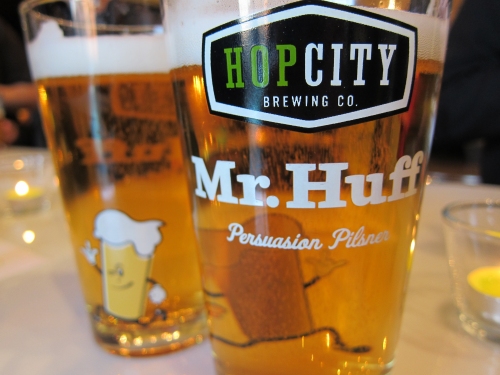
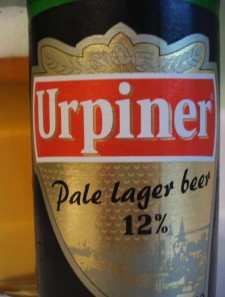 It helps, of course, when the importers do some outreach to try and spread the word about their goods. An example of this is an email I received a few weeks ago from James Tubaro of Oxford Imports, an agency that usually deals with wine, but that recently started carrying
It helps, of course, when the importers do some outreach to try and spread the word about their goods. An example of this is an email I received a few weeks ago from James Tubaro of Oxford Imports, an agency that usually deals with wine, but that recently started carrying 
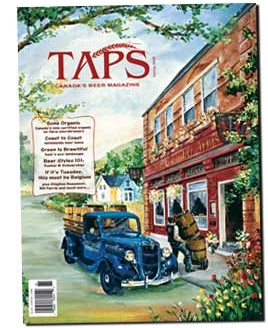 As I was finishing up my contributions to the upcoming Summer issue of
As I was finishing up my contributions to the upcoming Summer issue of 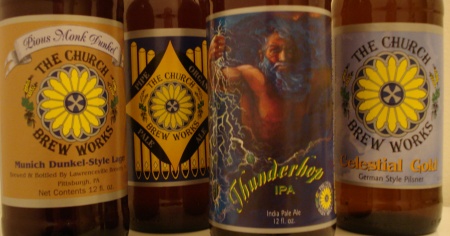

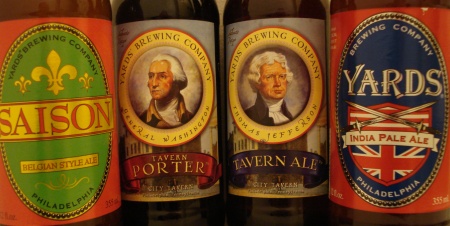
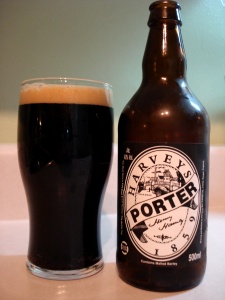 Harvey’s 1859 Porter – “…an extremely satisfying beer that is perfect for this time of year, with a robust but not overpowering flavour that pairs well with such hearty autumn fare as shepherd’s pie and beef stew.” (
Harvey’s 1859 Porter – “…an extremely satisfying beer that is perfect for this time of year, with a robust but not overpowering flavour that pairs well with such hearty autumn fare as shepherd’s pie and beef stew.” (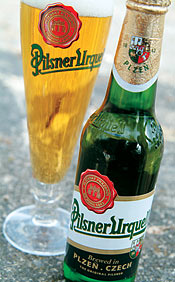 Pilsner Urquell – “…may no longer be the only Pilsner in the world, and it may not even the best one. […] But it’s still the original, and still very deserving of it’s well-earned reputation.” (
Pilsner Urquell – “…may no longer be the only Pilsner in the world, and it may not even the best one. […] But it’s still the original, and still very deserving of it’s well-earned reputation.” ( I’m sure my tens of readers will be happy to know that I’m still alive. I’ve just been even more busy and/or disorganised than ever these past few weeks. Hence the continuing lack of posts.
I’m sure my tens of readers will be happy to know that I’m still alive. I’ve just been even more busy and/or disorganised than ever these past few weeks. Hence the continuing lack of posts.
